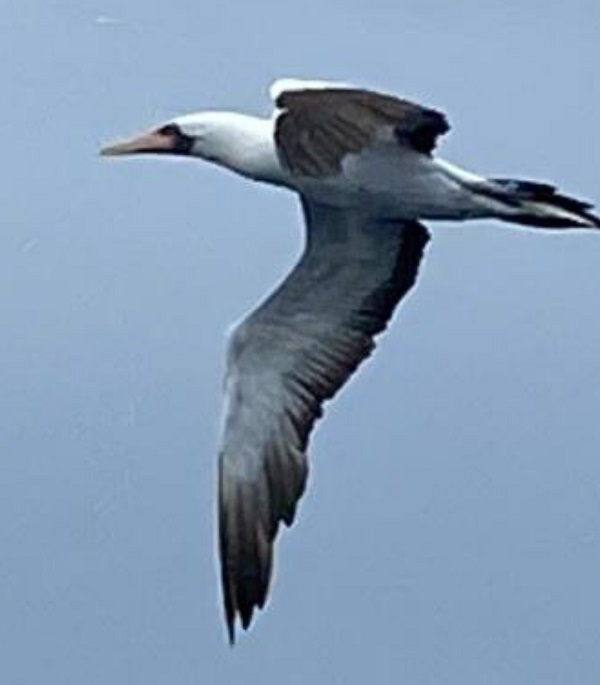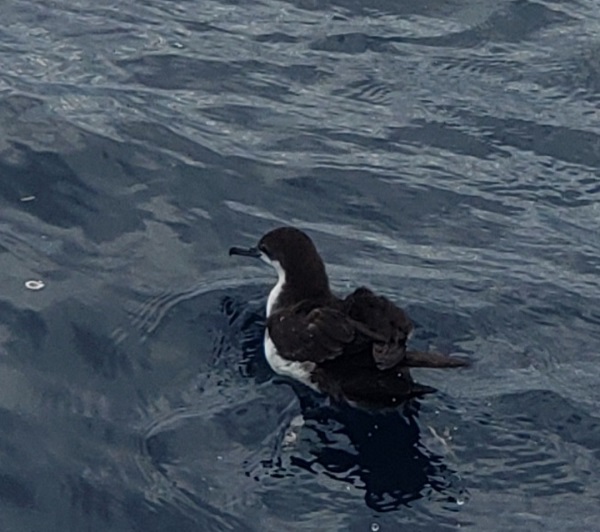Editor’s Note: Dr. Dan Brooks, Curator of Vertebrate Zoology recounts recent adventures in Panama while studying and birdwatching along the way.
In my last two blogs about a recent trip to Panama, I discussed offshore fish , and the importance of the Indigenous Embera in this area for the fishing industry. Although I’ve been an Ornithologist for 30 years, I did not become obsessed with birdwatching until the recent pandemic. I was curious how many species of birds I had seen over the many years of fieldwork in various countries and began to tally! Consequently, its probably not a huge surprise that I did take some time to twitch (birdwatch) during this recent trip to Panama. Where to go was enhanced significantly by Dr. Jan Cubilla, who moderates Panama’s eBird site for Cornell Laboratory of Ornithology.

The afternoon and morning before the puddle-jumper flight to the lodge I wrote about earlier, I took some time to Uber around to a few local spots in Panama City. On the day of arrival I visited the grounds of a closed archaeological museum which focused on the site where Panama was first founded by early Spanish settlers. This site, “Antiguo Museo de Panama Viejo” (Antique Museum of Old Panama), backs up to Panama Bay and contains open mangrove forest and pine trees, offering habitat to a diverse assemblage of birds. In fact, 11 of the 19 species seen in just half an hour were species relying on the bay (herons, cormorants, pelicans, frigatebirds, etc). Next up was part of a long public esplanade, also adjacent to Panama Bay called “Costa del Este – Paseo del Mar” (East Coast – ocean passage). Similar to the museum grounds at the last site, half of the 13 species seen in half an hour relied on the bay, including looks of an accidental White-cheeked Pintail, a species of duck typically inhabiting freshwater that was lost (not usually in Panama).
The following morning I continued my checklist around the downtown block where the hotel was located. Between the afternoon prior and that morning I tallied 11 species in just 15 minutes of both days combined! Not too shabby for a busy downtown metropolis, and many of the species were quite surprising – two species of extremely vocal green parrots, three species of large, bright yellow flycatchers, etc. But probably the best place I twitched in the city was “Parque Natural Metropolitano” (Metropolitan Park). I had twitched here 23 years ago with Rosabel Miro, who today is Director of Panama Audubon Society. Birding Metropolitan Park is always a bit of a surreal experience, being embedded within an intact tropical rainforest with views of the vast Panama City skyline from different vantage points. I arrived shortly after dawn, just before 7 am, stayed for just over an hour and accounted for 21 species. When I visited in 2000 with Rosabel we saw literally twice as many species in two hours, beginning at the same time of morning. Either Rosabel knew where to find things or I’m just not that sharp of a birder anymore? Probably both… The birds in the park were tropical rainforest denizens – a variety of parrots, hummingbirds, motmots, trogons, toucans, antbirds, and tanagers.

After leaving the city, I spent some time in more tropical forest, birding at the lodge in Darien Province, near the Colombian border. Towards the end of the visit there, I birded with Didi around the lodge habitat, accounting for 50 species during a couple of 30-60 minute evenings. Didi was hired as a Park Guard to help make sure that nobody was poaching on the property, which required carrying a pair of binoculars. In his spare time he began to observe the birdlife more and more through binoculars, to the point where he began guiding guests around the grounds in search of birds. Bizarrely, a flock of Great-tailed Grackles (Quiscalus mexicanus, yes the same kind we have all over Houston) inhabits the lodge, despite being 150 miles from the nearest continuous road, and far from the city in a very pristine location. Unfortunately, the grackles are outcompeting some of the species that have a similar ecological niche, such as the magnificent Chestnut-headed Oropendola (Psarocolius wagleri). Sadly the oropendolas are no longer at the lodge, only their long pendulum nests of grass fiber, now occupied by the grackles.
For me, perhaps the most exciting part of twitching on this trip was getting into “Pelagic birding” – observing avian species that live far out at sea, rarely visiting the coast except to nest. This is a sub-culture among birders that requires a lot of patience, a strong stomach that won’t get seasick, and familiarity with the birds because binoculars are often useless with the boat rocking; consequently it is really not for everyone! Nonetheless, I was able to get on quite a few “lifers” (first time to see them in my life) out at sea, and at some feeding frenzies there were as many as 14 species of Pelagic birds in a given area! Feeding frenzies are when large schooling fish such as Yellowfin Tuna (Thunnus albacares) are actively feeding with bits of masticated fish prey parts chumming the water – that’s where the Pelagic birds come in, consuming all the masticated fish parts! Fishermen rely on the feeding birds to locate schools of fish to catch. These same areas are often the most productive grounds for trolling also.
More from Dr. Dan Brooks
Fill in the Blanks with Curator of Vertebrate Zoology Dan Brooks






